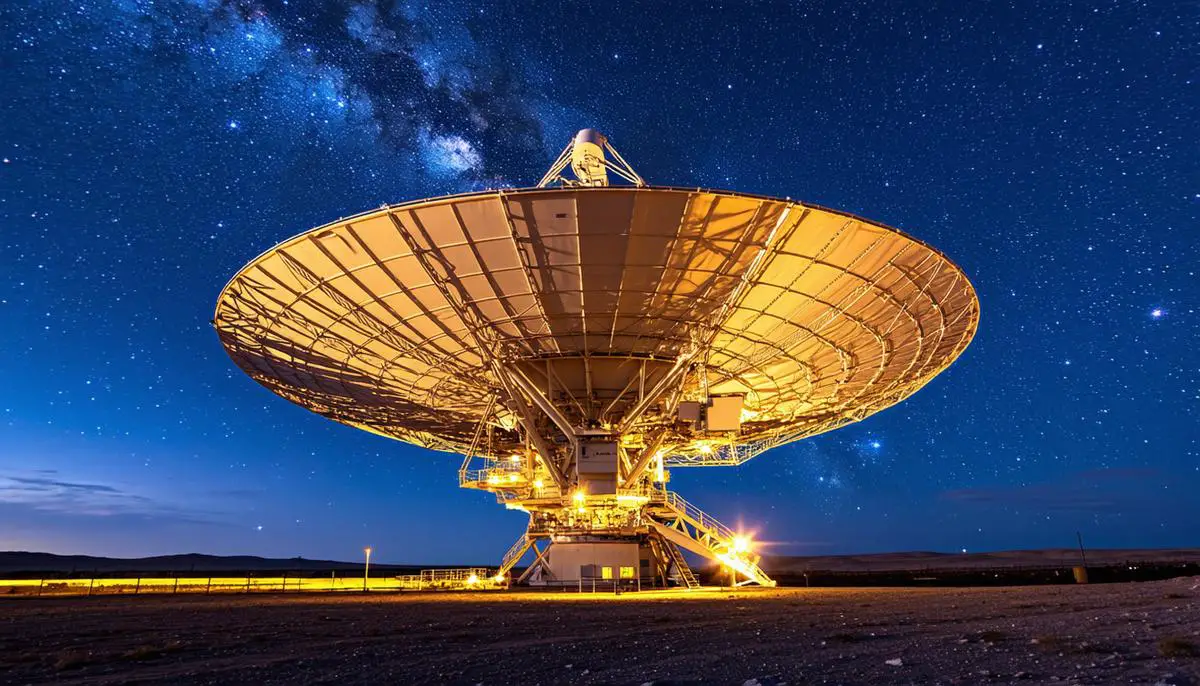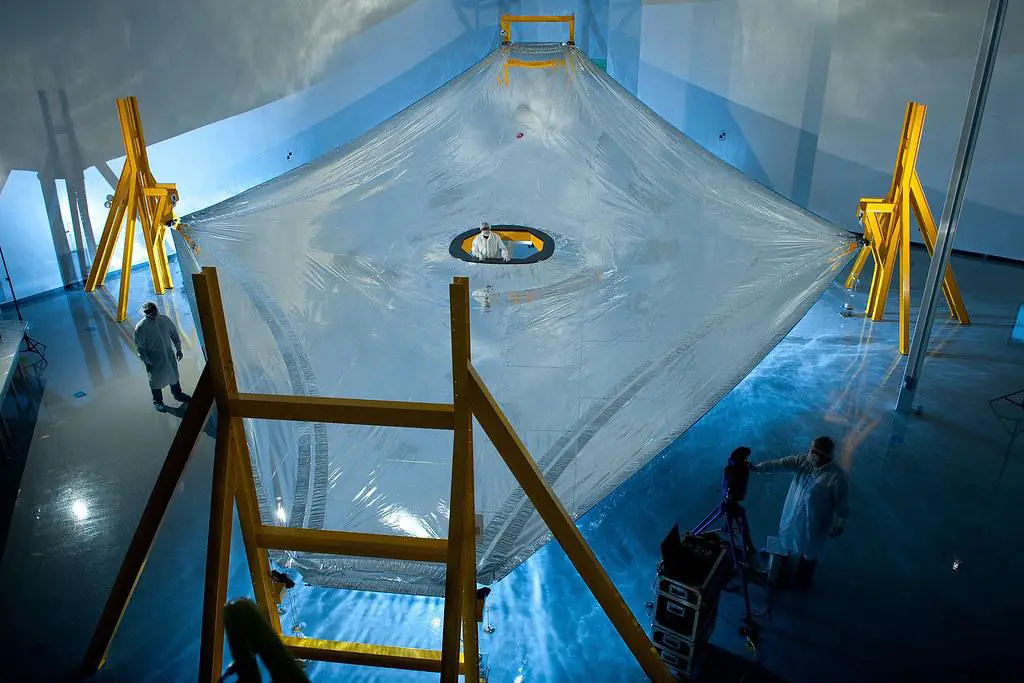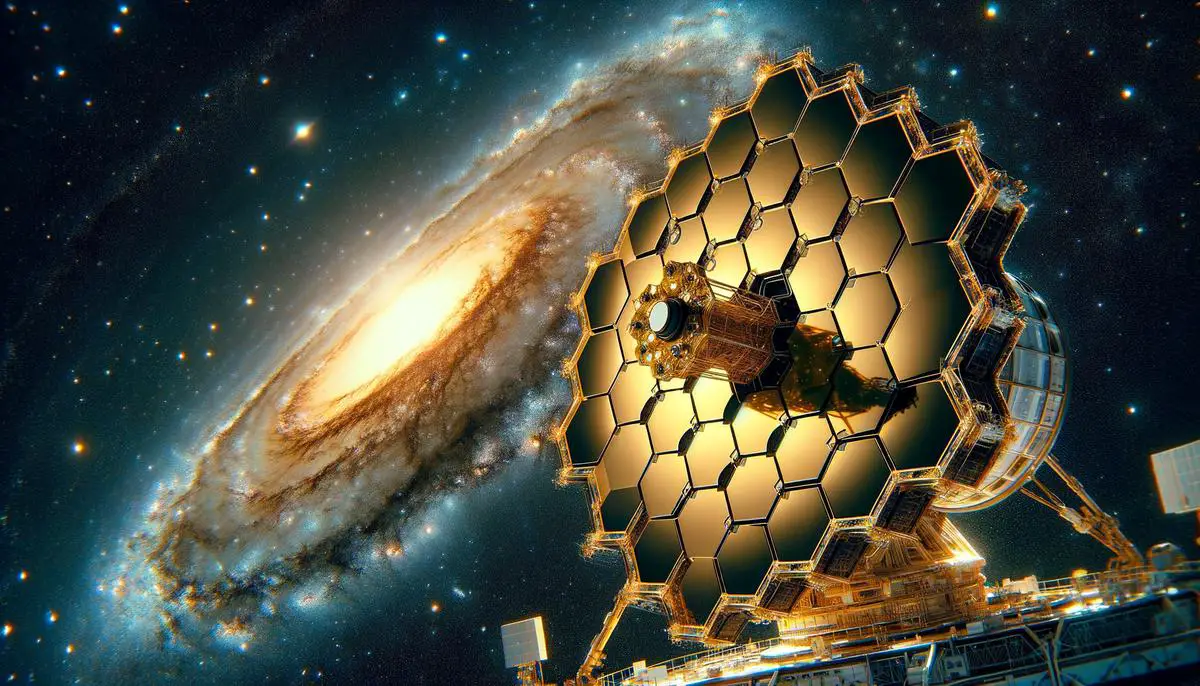Communication Systems
The James Webb Space Telescope (JWST) primarily uses the Ka-band for communication with Earth, chosen for its ability to transmit large data volumes over vast distances. This high-frequency channel allows JWST to send up to 57 GB of data daily, depending on its observation schedule, significantly surpassing older systems like the X-band.
The Deep Space Network (DSN), with hubs in Canberra, Madrid, and Barstow, coordinates communication with JWST. These ground stations schedule contact weeks in advance to ensure data transmission opportunities.
To maintain data integrity, JWST employs the Reed-Solomon error-correction protocol, reducing the need for data retransmission. The telescope's communication setup includes:
- Ka-band for scientific data transmission at 28 Mbps
- Two S-band channels for essential status information and plans
NASA opted for a reliable communication system over untested technologies, ensuring dependable data transmission for this critical mission.

Infrared Observation Challenges
The James Webb Space Telescope (JWST) faces unique challenges in infrared observation, particularly in capturing faint signals from the early universe. To eliminate thermal interference, JWST must operate at extremely low temperatures.
A massive, five-layered sunshield, made from ultra-thin Kapton, protects the observatory from the Sun's heat. The telescope's beryllium mirrors, coated in gold, function at temperatures hundreds of degrees below zero. Beryllium maintains structural stability in cold conditions, while the gold coating enhances infrared light reflection.
JWST's location at Lagrange point L2, about a million miles away, provides an unobstructed view of the universe. This position minimizes the need for frequent adjustments and maximizes JWST's ability to remain in an ideal cold, dark environment.

Structural and Mechanical Design
The James Webb Space Telescope (JWST) required innovative design solutions to fit into a rocket for launch. The telescope's primary mirror, composed of 18 hexagonal beryllium segments, is engineered to assemble seamlessly after launch. These segments create a strong yet lightweight structure that maintains optical precision in space's cold environment.
A backplane structure supports the mirrors and maintains their alignment, withstanding launch stresses while remaining stable at extremely low temperatures. Engineers used speckle pattern interferometry to assess structural movements during tests.
The sunshield deployment mechanism involves 344 individual components working in unison to unfurl the five-layer shield precisely in orbit. The spacecraft's deployment mechanisms also include the secondary mirror on a foldable tripod, which must align perfectly to direct light through the optical array.
Each element of JWST's structural and mechanical design represents a technical achievement, ensuring seamless function within the overall system for unprecedented cosmic observations.
Testing and Validation
The James Webb Space Telescope (JWST) underwent extensive testing to ensure its resilience in space. Cryo-vacuum assessments in the 40-foot diameter Chamber A at NASA's Johnson Space Center simulated deep-space conditions, with temperatures as low as minus 390 degrees Fahrenheit in a vacuum.
Each mirror segment, instrument, and component underwent rigorous cold testing to ensure unified performance in space. The telescope's mirrors, intentionally shaped to be imperfect at room temperature, had to achieve precise form once cooled—a transformation verified through systematic testing.
These comprehensive tests were crucial safeguards against potential failures in orbit, as JWST cannot be serviced by a rescue mission. Each successful trial bolstered confidence in the project, bringing it closer to its historic launch.
International Collaboration
The James Webb Space Telescope (JWST) project exemplifies international cooperation, involving NASA, the European Space Agency (ESA), and the Canadian Space Agency (CSA). Each agency made significant contributions to overcome the technical and logistical challenges of building this sophisticated space telescope.
Key contributions include:
- NASA: Provided crucial guidance throughout the project, overseeing the design and integration of the telescope's complex systems.
- ESA: Supplied the Ariane 5 launch vehicle and created essential instruments, including the Near-Infrared Spectrograph (NIRSpec) and contributed to the Mid-Infrared Instrument (MIRI).
- CSA: Designed and delivered key components such as the Near-Infrared Imager and Slitless Spectrograph (NIRISS) and the Fine Guidance Sensor (FGS).
Numerous contractors from 29 U.S. states, several European countries, and Canada contributed their specialized skills. This global collaboration fostered innovations that might have been unattainable if pursued independently, combining persistence with technical excellence.

The James Webb Space Telescope represents our shared goal to understand the universe's origins, uniting global expertise. It promises insights that will illuminate cosmic mysteries for future generations.
- National Aeronautics and Space Administration. James Webb Space Telescope. NASA Website.
- European Space Agency. James Webb Space Telescope. ESA Science & Exploration.
- Canadian Space Agency. Canada's Contribution to the James Webb Space Telescope. CSA Website.
- Northrop Grumman. James Webb Space Telescope. Northrop Grumman Aerospace Systems.
![]()
